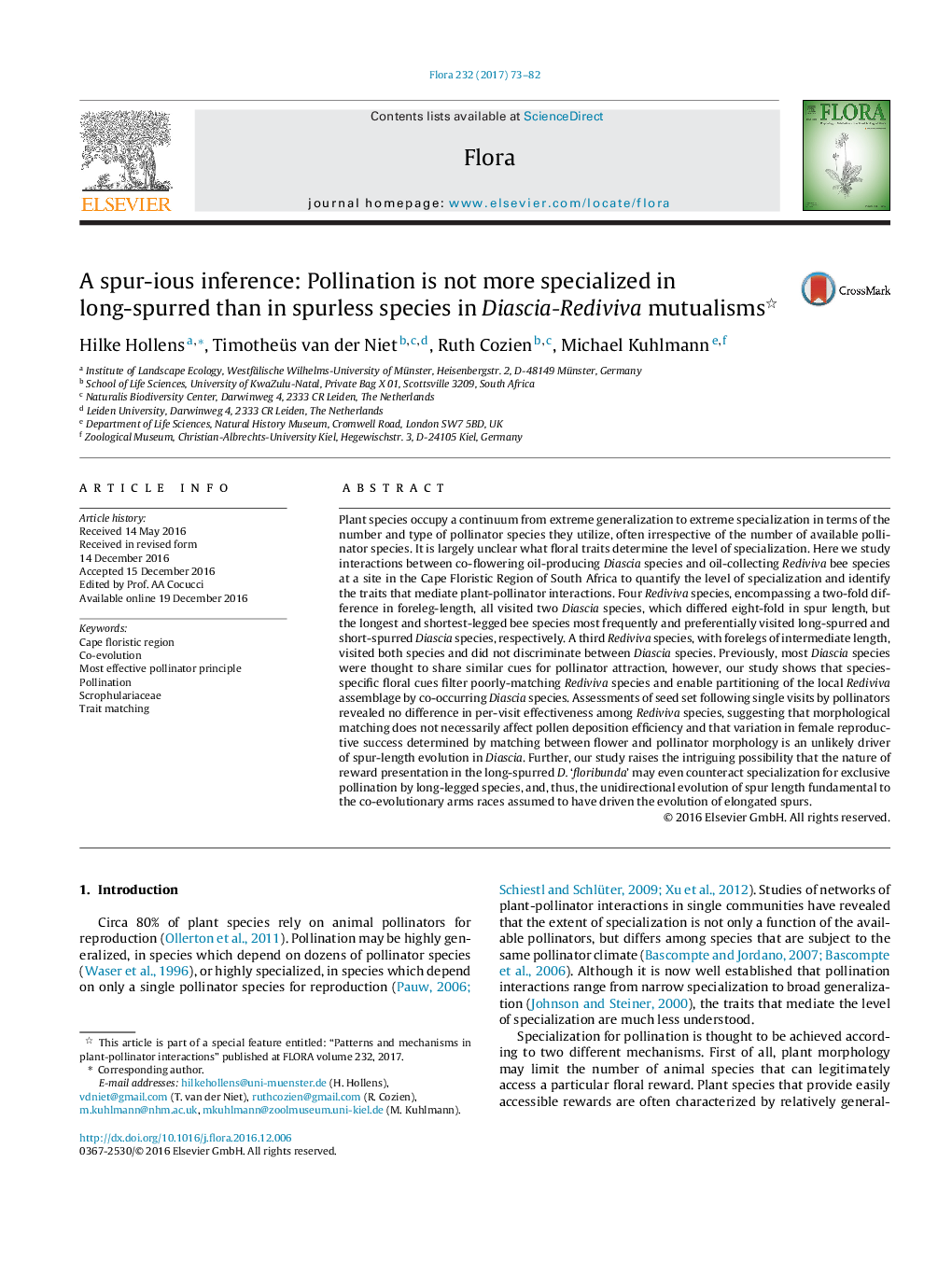| کد مقاله | کد نشریه | سال انتشار | مقاله انگلیسی | نسخه تمام متن |
|---|---|---|---|---|
| 5532460 | 1549927 | 2017 | 10 صفحه PDF | دانلود رایگان |

- 4 Rediviva (forelegs: 8-18Â mm) co-occur with 2 Diascia species (spurs: 2-16Â mm).
- All Rediviva species visited both Diascia species.
- Pollinator effectiveness was similar, but visitation frequency differed among bees.
- Bees that best match plant traits are the most important pollinator.
- Unique oil distribution in elongated spurs rewards short- and long-legged bees.
Plant species occupy a continuum from extreme generalization to extreme specialization in terms of the number and type of pollinator species they utilize, often irrespective of the number of available pollinator species. It is largely unclear what floral traits determine the level of specialization. Here we study interactions between co-flowering oil-producing Diascia species and oil-collecting Rediviva bee species at a site in the Cape Floristic Region of South Africa to quantify the level of specialization and identify the traits that mediate plant-pollinator interactions. Four Rediviva species, encompassing a two-fold difference in foreleg-length, all visited two Diascia species, which differed eight-fold in spur length, but the longest and shortest-legged bee species most frequently and preferentially visited long-spurred and short-spurred Diascia species, respectively. A third Rediviva species, with forelegs of intermediate length, visited both species and did not discriminate between Diascia species. Previously, most Diascia species were thought to share similar cues for pollinator attraction, however, our study shows that species-specific floral cues filter poorly-matching Rediviva species and enable partitioning of the local Rediviva assemblage by co-occurring Diascia species. Assessments of seed set following single visits by pollinators revealed no difference in per-visit effectiveness among Rediviva species, suggesting that morphological matching does not necessarily affect pollen deposition efficiency and that variation in female reproductive success determined by matching between flower and pollinator morphology is an unlikely driver of spur-length evolution in Diascia. Further, our study raises the intriguing possibility that the nature of reward presentation in the long-spurred D. 'floribunda' may even counteract specialization for exclusive pollination by long-legged species, and, thus, the unidirectional evolution of spur length fundamental to the co-evolutionary arms races assumed to have driven the evolution of elongated spurs.
Journal: Flora - Volume 232, July 2017, Pages 73-82